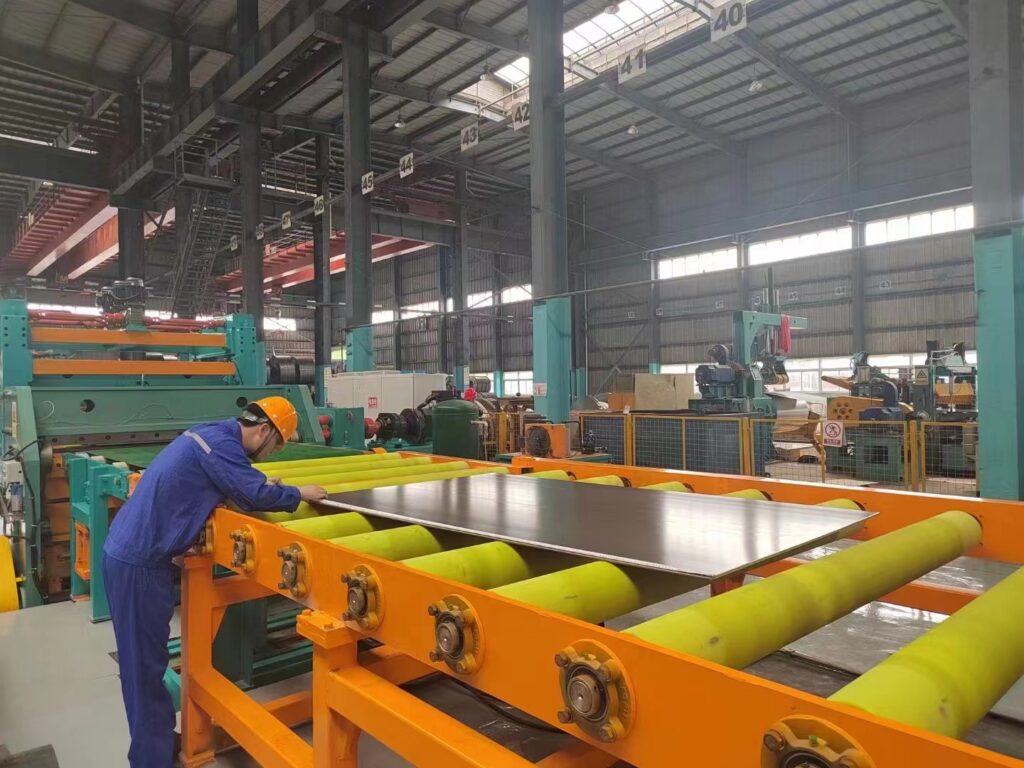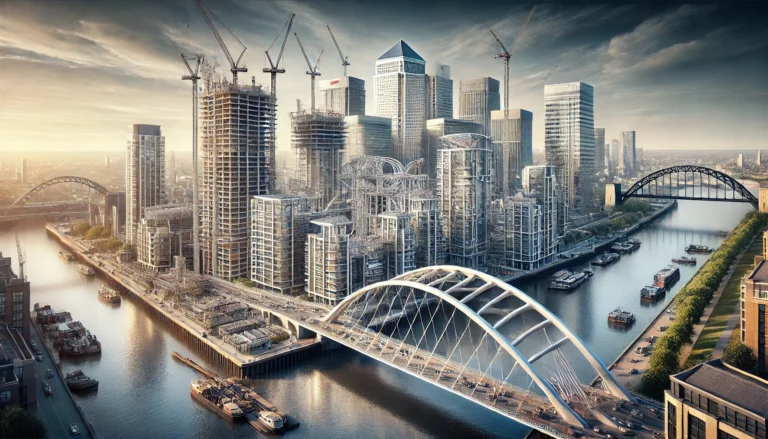The Sustainable Future of Stainless Steel Reinforcement
Stainless steel is known for its remarkable durability and corrosion resistance, making it a material of choice across various industries for decades. Its applications range from food and drink processing to domestic appliances, chemical processing, healthcare, architecture, and the mobility sector. Despite its widespread use, stainless steel’s application in the building and infrastructure (B&I) sector is still growing, accounting for less than 1% of the total annual steel consumption in this sector. As we face the challenges of climate change and the need to replace aging infrastructure, stainless steel reinforcement emerges as a sustainable solution.

The Role of Stainless Steel in Modern Infrastructure
Durability and Longevity
Stainless steel is highly durable and offers significant advantages in terms of sustainability. Buildings and infrastructure built with stainless steel can last over 125 years with minimal maintenance, making it an ideal material for long-term investments. This longevity reduces the need for frequent repairs or replacements, conserving resources and reducing waste.
Environmental Impact
Using stainless steel reinforcement in construction helps mitigate the environmental impact of building materials. The production of stainless steel has become increasingly efficient, with many manufacturers adopting greener practices. Additionally, stainless steel is 100% recyclable, further reducing its environmental footprint.
Economic Efficiency
While the initial cost of stainless steel may be higher than other materials, its durability and low maintenance requirements make it a cost-effective choice in the long run. Life-cycle costing, which considers the total cost of ownership over a building’s lifespan, shows that stainless steel can provide significant savings by minimizing maintenance and replacement costs.
Applications of Stainless Steel Reinforcement
Climate Change Adaptation
The ongoing effects of climate change necessitate the use of materials that can withstand extreme weather conditions and environmental stressors. Stainless steel’s resistance to corrosion and high temperatures makes it an excellent choice for structures exposed to harsh environments. This resilience ensures that buildings and infrastructure can endure and remain functional despite changing climate conditions.
Replacement of Aging Infrastructure
Many existing structures were built over 50 years ago and are now degrading. Replacing these with modern materials like stainless steel can extend their lifespan and improve their performance. Stainless steel reinforcement offers superior strength and durability, making it an ideal replacement for outdated materials.
Sustainable Urban Development
As urban areas continue to grow, there is a need for sustainable materials that support resilient infrastructure. Stainless steel’s properties align with the goals of sustainable urban development, providing a reliable material for constructing long-lasting and environmentally friendly buildings.
The Benefits of Stainless Steel in Construction
Corrosion Resistance
Stainless steel’s most notable property is its corrosion resistance, which is crucial for structures exposed to moisture and harsh environments. The chromium content in stainless steel forms a passive layer that protects the material from corrosion, ensuring longevity and structural integrity.
High Strength-to-Weight Ratio
Stainless steel’s high strength-to-weight ratio means that less material is needed to achieve the same structural support as other materials. This property not only reduces the overall weight of structures but also lowers transportation and handling costs.
Aesthetic Appeal
In addition to its functional benefits, stainless steel offers aesthetic advantages. Its sleek, modern appearance is favored in architectural design, providing a visually appealing finish that requires minimal maintenance to retain its luster.
Case Studies: Successful Use of Stainless Steel Reinforcement

Example 1: The Canary Wharf Development
One of the most notable examples of stainless steel reinforcement in construction is the Canary Wharf development in London. This project utilized stainless steel extensively to ensure the durability and sustainability of the buildings. The use of stainless steel reinforcement in this high-profile project highlights its potential in modern construction.
Example 2: The Millennium Bridge
The Millennium Bridge in Gateshead, UK, is another excellent example of stainless steel’s application in infrastructure. This iconic structure used stainless steel to achieve both aesthetic appeal and structural strength, demonstrating the material’s versatility and effectiveness in large-scale projects.
The Future of Stainless Steel Reinforcement
As we look to the future, the role of stainless steel in construction is set to expand. Innovations in stainless steel production and processing continue to improve its properties and reduce its environmental impact. These advancements make stainless steel an increasingly attractive option for sustainable construction.
Technological Advancements
Emerging technologies in stainless steel manufacturing are enhancing its performance and sustainability. For example, new alloy compositions and heat treatment processes are improving stainless steel’s strength and corrosion resistance. These advancements allow for more efficient use of the material in construction projects.
Increased Adoption in Green Building
The green building movement is driving the adoption of materials like stainless steel that contribute to energy efficiency and sustainability. Certification programs like LEED (Leadership in Energy and Environmental Design) recognize the benefits of using stainless steel in construction, encouraging its use in green building projects.
Global Demand
As global demand for sustainable building materials grows, stainless steel suppliers are poised to meet this need. The versatility and durability of stainless steel make it suitable for a wide range of applications, from residential buildings to major infrastructure projects.
Conclusion
Stainless steel reinforcement is a vital component of modern, sustainable construction. Its durability, corrosion resistance, and recyclability make it an ideal choice for long-lasting, environmentally friendly buildings and infrastructure. As we address the challenges of climate change and the need to replace aging structures, stainless steel offers a reliable and sustainable solution.
By understanding the benefits and applications of stainless steel reinforcement, architects, engineers, and builders can make informed decisions that contribute to the development of resilient and sustainable urban environments. With continued advancements in technology and an increasing focus on sustainability, the future of stainless steel in construction looks promising.
For more information on the advantages of stainless steel and how it can be incorporated into your construction projects, consult with leading stainless steel suppliers and industry experts. Their knowledge and expertise will help you select the best materials to meet your specific needs and achieve your sustainability goals.



